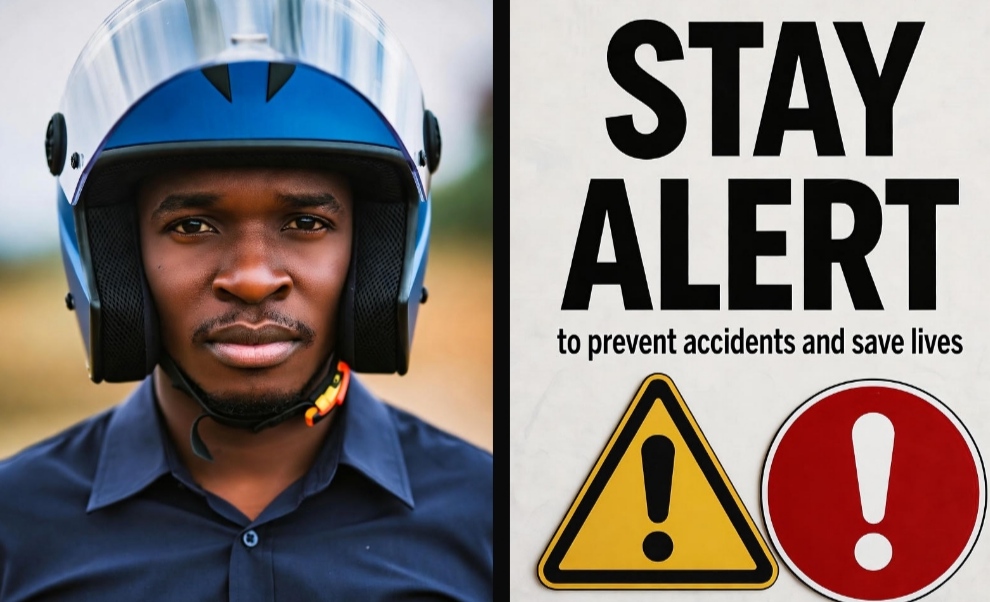 Najmuddin A Farooqi.
Najmuddin A Farooqi.
Safety at home, on the road, or outdoors is a shared responsibility. Many accidents can be prevented by being alert, informed and cautious. The following sections outline essential precautions and emergency measures related to road safety, fire safety, animal bites (rabies) and snake bites.
1.Road Safety :
Road safety is crucial for saving lives. Thousands die annually due to negligence or lack of awareness. Pedestrians, cyclists and motorcyclists form nearly half of all road fatalities. Following basic rules can prevent most mishaps.
Basic Rules and Precautions:
Traffic Signals: Green—go, yellow—slow down, red—stop. Always obey signals and signs.
Stop, Look and Cross: Use pedestrian crossings. If unavailable, look right–left–right before crossing; never cross near bends or between parked vehicles.
Use Sidewalks: Walk on pavements or the road’s extreme edge, facing traffic if no pavement exists.
Crossroads: Teach children to cross only at intersections or zebra crossings; running across roads is dangerous.
At Bends/Unmanned Intersections: Listen for horns or approaching vehicles.
Inside Vehicles: Keep hands and heads inside; wear seat belts and ensure children stay seated.
Cyclists/Motorcyclists: Always wear helmets; ride on the left and with traffic flow.
Vehicle Safety: Avoid opening doors suddenly; use hand signals when needed.
Speed and Helmet Importance :
Every 1 km/h reduction in speed lowers crash risk by 2%. Helmets reduce head injury or death risk by about 40%. Seat belts and child seats greatly cut fatality chances.
Road safety depends on mutual respect, awareness, and patience a shared duty for all road users.

In Case of Accident :
Report: File an FIR at the nearest police station immediately.
Injury: Get an injury report from the hospital treating the victim.
Death: A post-mortem is mandatory; it must not be avoided.
Insurance Claim :
Keep documents valid:
- Driving Licence
- Registration Certificate
- Pollution Certificate
- “Act Only” (Third Party) Insurance
If the owner-driver dies in an accident:
The nominee gets ₹15 lakhs (whether two or four wheelers) if the driver had a valid licence, the vehicle was insured and the case was reported with post-mortem done.
Hit-and-Run Cases :
If the vehicle is unidentified:
- File an FIR.
- Obtain an injury report or post-mortem.
- Submit a claim to the District Collector under Section 161, Motor Vehicles Act.
Government compensation:
₹2,00,000 for death.
₹50,000 for grievous injury.
Other road cases should be filed with the Motor Accident Claims Tribunal (MACT) through a legal advocate.
2.Fire Safety:
Fires can erupt anywhere homes, offices, or public places often without warning. Electrical faults, unattended stoves, or careless smoking are common causes. Awareness and calm action can prevent disasters.
Preventive Measures :
Stay Alert: Act quickly; never panic.
Emergency Number: Dial 101 for fire services.
Fire Alarms: Install and maintain regularly.
Before Sleeping: Close doors near kitchens or fireplaces to slow fire spread.
No Indoor Smoking: Avoid smoking in bed; ensure cigarettes are fully extinguished.
Child Safety: Keep matches, candles, and lighters out of reach; supervise children in kitchens.
Electrical Safety: Avoid overloading sockets; unplug unused devices.
Clear Exits: Keep pathways and doors unobstructed; store keys near escape points.
Cooking Safety: Never leave cooking unattended—hot oil or flames can ignite instantly.
If a Fire Breaks Out :
Stay calm and alert everyone.
Crawl low under smoke; air near the floor is cleaner.
Use stairs, not elevators.
Once outside, never re-enter a burning building.
Inform your insurance company promptly if property is insured.
Fire safety relies on awareness, preparedness, and composure qualities that save lives and property.

3.Animal Bite (Rabies): Prevention and Treatment :
Rabies is a fatal yet vaccine-preventable viral disease, mostly transmitted through bites or scratches from infected animals, mainly dogs. In India, dogs cause 99% of human rabies cases. The virus attacks the central nervous system and is nearly always fatal once symptoms appear making immediate treatment essential.
Transmission and Risk :
Rabies spreads when infected saliva enters through bites, scratches, or open wounds. It cannot penetrate intact skin. After entering nerves, the virus travels to the brain, causing coma and death if untreated.
Prevention :
Vaccinate Pets: Regular vaccination of dogs and cats prevents transmission.
Community Awareness: Promote responsible pet ownership and bite prevention.
Avoid Strays: Never provoke or play with unfamiliar animals.
High-Risk Occupations: Vets, lab workers, and animal handlers should receive preventive vaccines.
Report Strays: Notify local authorities about aggressive or stray animals.
Symptoms and Stages :
- Incubation (3–12 weeks): No symptoms; shorter if bite near head.
- Prodrome: Fever, anxiety, headache, nausea.
- Neurological Phase: Aggression, paralysis, convulsions, excess saliva, and hydrophobia.
- Coma and Death: Occurs within hours if untreated.
First Aid and Treatment :
- Wound Care: Wash the area with soap and water for 15 minutes; apply antiseptic.
- Seek Medical Help Immediately.
- Post-Exposure Prophylaxis (PEP): Rabies vaccine series over 2–4 weeks prevents infection if given early.
- When in Doubt Treat: Begin vaccination if infection risk is uncertain.
According to WHO, rabies is “100% vaccine-preventable.” Vaccinating at least 70% of dogs can completely stop human transmission.
4. Snake Bite: Awareness and First Aid :
Snake bites are medical emergencies. While not all snakes are venomous, venomous bites can cause severe or fatal complications if untreated.
Prevention :
Stay cautious in snake-prone areas—fields, forests, and near water bodies.
Wear long boots and thick clothing in tall grass.
Never disturb or handle snakes.
Keep surroundings clean and free of rodents, which attract snakes.
Symptoms of Venomous Bites:
Intense pain or swelling at bite site
Bleeding or bruising.
Blurred vision or drooping eyelids.
Muscle weakness, spasms.
Difficulty speaking or breathing.
First Aid :
Stay Calm: Panic accelerates venom spread.
Keep Still: Immobilize the affected limb below heart level.
Call Emergency Services Immediately.
Do Not: Apply tourniquets, cut the wound, suck venom, or give food/alcohol.
Remove tight items before swelling begins.
Medical Treatment :
Only trained doctors should administer antivenom, the primary treatment made from antibodies that neutralize venom toxins. The type and dose depend on the snake species and bite severity.
Conclusion :
Safety awareness and quick response can prevent tragedy. Whether following traffic rules, maintaining fire precautions, vaccinating pets, or being vigilant in snake-prone areas—knowledge and preparedness save lives. Everyone must take responsibility for personal and community safety, turning awareness into effective action.



